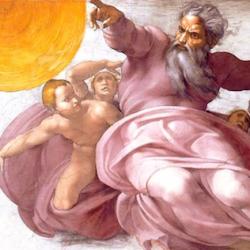Hugh Grady opens his Shakespeare and Impure Aesthetics (6-10) with a brief and illuminating discussion of Kant’s aesthetics of purity. By “pure” here is meant the freedom of aesthetic experience from cognitive reason and teleological judgments, from practical or moral interests. This disinterested experience of art is an encounter with beauty that is not determined by or subordinate to the good or the true.
The purity of the experience is in fact the criterion for judging a truly aesthetic experience. It is what distinguishes the beautiful from the merely charming: “Kant argues that we have to distinguish between the truly beautiful (in principle universal) and the merely attractive (a quality of an object that is desirable to us because of some merely subjective interest). This argument constitutes Kant’s notorious doctrine of aesthetic disinterest, and he soon finds himself disallowing the ‘lower senses’ of taste, touch, and smell; sexual or erotic desire; and any merely subjective associations. Furthermore, because the truly aesthetic is non-cognitive for Kant, it must exclude any conceptual dimension or ‘teleological’ pre-conceptions (by which he means a judgment that something is a perfect specimen of its type – an excellent horse or human figure, for example). Such judgments, he writes, often accompany aesthetic pleasure in the perception of some object, but he insists they are logically separate. In other words, Kantian aesthetics is ‘pure.’ Stripped of any erotic or personal charm, its content deemed irrelevant to its aesthetic purity, Kant’s aesthetic is primarily a formalism (with the understanding that form involves a peculiar kind of non-utilitarian ‘purposiveness’): ‘A pure judgment of taste’, Kant writes, ‘is one not influenced by charm or emotion (though these may be connected with a liking for the beautiful), and whose determining basis is therefore merely the purposiveness of the form.’”
Aesthetic experience is non-cognitive, though there is room for “aesthetic ideas.” Poetry, for instance, “uses language and concepts, is essentially aesthetic because such ideas are ‘inner intuitions to which no concept can be completely adequate.’”
Though non-cognitive and non-practical, aesthetic experience is linked to pure and practical reason, in ways that Kant never successfully makes clear. Still, the attempt opens up the possibility of making aesthetics and beauty the master transcendental: “aesthetic experience leads, crucially for Kant, into a consciousness of our cognitive abilities, a kind of awareness of our own powers, and it is pleasurable in itself. This quality in turn allows Kant to say that the aesthetic experience thus harmonizes the whole person.”
It’s on this basis that Schiller and others formulate a program of humanistic education in which art, beauty,, and aesthetics are central concerns. Kant even enabled “the young Karl Marx a concept to help define an ideal of all round human development.”
Thus Kant the rationalist becomes the father of Romanticism.














